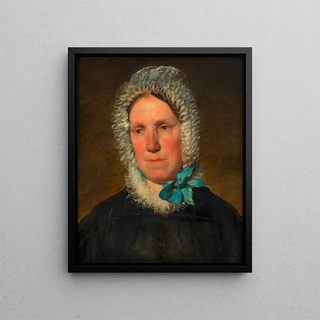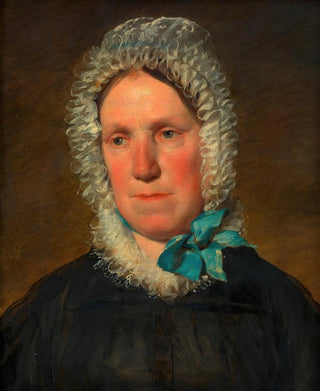Art print | Josepha Kaltenthaler with lace bust, mother of the artist's first wife - Friedrich von Amerling


View from behind

Frame (optional)
Reproduction of Josepha Kaltenthaler with lace bust, mother of the artist's first wife – Friedrich von Amerling – Captivating introduction
In the panorama of 19th-century Austrian art, Friedrich von Amerling's work stands out for its elegance and sensitivity. Among his most remarkable portraits is the depiction of Josepha Kaltenthaler, mother of his first wife. This painting, blending delicacy and psychological depth, invites the viewer to delve into the artist's intimate universe. The finesse in the treatment of materials and the richness of details make this work a true masterpiece, showcasing Amerling's skill and artistic vision. Through this art print, we are invited to explore not only the artist's talent but also the story of a woman who played a significant role in his life.
Style and uniqueness of the work
Friedrich von Amerling's style is often characterized by meticulous attention to detail and mastery of light effects. In the representation of Josepha Kaltenthaler, the artist manages to capture the very essence of his subject. The lace bust surrounding her evokes not only the fashion of the time but also a certain delicacy that seems to envelop the female figure. The color palette chosen by Amerling, subtle and nuanced, gives the work an atmosphere of serenity and refinement. Every brushstroke seems to be a caress, and Josepha's gentle expression reflects an introspection that invites contemplation. This portrait is not merely a representation but a true immersion into the psychology of his model, a characteristic that has made the artist's reputation.
The artist and his influence
Friedrich von Amerling, born in 1803 in Vienna, established himself as one of the most sought-after portraitists of his time. His training with the great masters of the era, combined with a unique artistic sensitivity, allowed him to develop a style that blends realism and romanticism. Amerling captured the spirit of his time while incorporating various influences from European art. His work not only marked his era but continues to influence many contemporary artists. Through

Matte finish

View from behind

Frame (optional)
Reproduction of Josepha Kaltenthaler with lace bust, mother of the artist's first wife – Friedrich von Amerling – Captivating introduction
In the panorama of 19th-century Austrian art, Friedrich von Amerling's work stands out for its elegance and sensitivity. Among his most remarkable portraits is the depiction of Josepha Kaltenthaler, mother of his first wife. This painting, blending delicacy and psychological depth, invites the viewer to delve into the artist's intimate universe. The finesse in the treatment of materials and the richness of details make this work a true masterpiece, showcasing Amerling's skill and artistic vision. Through this art print, we are invited to explore not only the artist's talent but also the story of a woman who played a significant role in his life.
Style and uniqueness of the work
Friedrich von Amerling's style is often characterized by meticulous attention to detail and mastery of light effects. In the representation of Josepha Kaltenthaler, the artist manages to capture the very essence of his subject. The lace bust surrounding her evokes not only the fashion of the time but also a certain delicacy that seems to envelop the female figure. The color palette chosen by Amerling, subtle and nuanced, gives the work an atmosphere of serenity and refinement. Every brushstroke seems to be a caress, and Josepha's gentle expression reflects an introspection that invites contemplation. This portrait is not merely a representation but a true immersion into the psychology of his model, a characteristic that has made the artist's reputation.
The artist and his influence
Friedrich von Amerling, born in 1803 in Vienna, established himself as one of the most sought-after portraitists of his time. His training with the great masters of the era, combined with a unique artistic sensitivity, allowed him to develop a style that blends realism and romanticism. Amerling captured the spirit of his time while incorporating various influences from European art. His work not only marked his era but continues to influence many contemporary artists. Through






